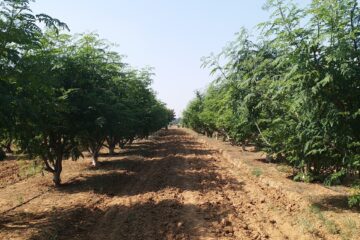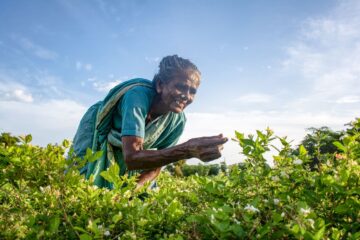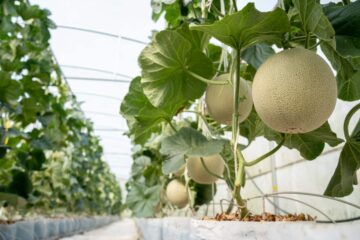The Integrated Farming System (IFS) is a comprehensive approach designed to address the challenges faced by small and marginal farmers. It aims to enhance income, employment opportunities, and overall livelihood by integrating multiple agricultural components such as crop production, horticulture, poultry, and aquaculture within a single farm.
Why Integrated Farming?
This method incorporates livestock (goats, cows), poultry (native chickens, ducks, turkeys), fruit trees, and vegetable crops within a sustainable, eco-friendly farming environment. Traditional farm pond management plays a crucial role in this system, where pond bunds are utilized for year-round vegetable cultivation.
By utilizing wastewater from fish ponds for irrigating crops, fruit trees, and fodder plants, farmers can maximize resource efficiency and generate higher income.
How It Works?
Many farmers fail to utilize nutrient-rich pond water effectively. However, under the IFS model, pond bunds are used for growing vegetables and fruit crops, ensuring a continuous supply of fresh produce throughout the year.
Key Benefits
✔ Year-round availability of vegetables for home consumption
✔ Surplus vegetables can be sold for additional income
✔ Reduces dependency on external inputs like fertilizers and irrigation
✔ Enhances food security and nutrition for rural families
A 200 sq. meter area near the farmhouse can be used for growing vegetables, guava, papaya, banana, and leafy greens, meeting family food needs and generating surplus income.
Additionally, organic manure from fish pond sediment and earthworms can be used to fertilize crops, reducing the need for synthetic fertilizers. Pond water also serves as a reliable irrigation source for both bund crops and field crops.
Research Findings
A study on nutrient gardens under the IFS model yielded:
| Crop | Yield (kg) (2021-22) | Yield (kg) (2022-23) |
|---|---|---|
| Radish | 87 | 72 |
| Ridge Gourd | 72 | 64.5 |
| Bitter Gourd | 59 | 52.9 |
| Snake Gourd | 41 | 36 |
| Banana | 187 | 267 |
| Amaranth Greens | 194 | 178.9 |
| Coriander (160 sq. meters) | 156 | 132 |
| Mint | 33 | 26 |
| Red Amaranth | 17 | 11 |
This system ensured a year-round supply of vegetables, while surplus leafy greens, fruits, and vegetables contributed to additional household income.
Between 2021-22 and 2022-23, an area of 160 sq. meters cultivated under the IFS model generated an income of ₹9,918 and ₹10,401, respectively. Additionally, nutrient gardens created employment opportunities equivalent to 63 and 57 man-days in 2015-16 and 2016-17.
Furthermore, farm waste was effectively recycled into organic compost, reducing reliance on chemical inputs.
Conclusion
IFS is a holistic approach to solving small and marginal farmers’ challenges. In India, where 80% of farmers are smallholders but control only 36% of total farmland, this model optimizes limited land resources for maximum productivity.
Key benefits include:
✔ Improved food security for farm families
✔ Increased income and employment, especially for women
✔ Reduced dependence on chemical fertilizers through organic waste recycling
✔ Enhanced sustainability and self-sufficiency
By implementing integrated farming models in smallholder farming communities, we can strengthen rural livelihoods and promote sustainable agriculture.
References
- Alam & Islam (2009): Integrated Approach to Pond-Based Farming for Sustainable Income & Production (Bangladesh J. Agric. 34(4): 577-584).
- Swarnam & Priyanka (2014): Integrated Farming for Sustainable Livelihoods in Nicobar Tribal Areas (Andaman Science Journal, 19(1): 19-22).
Dr. C. Ra. Srirangasami, Department of Fodder Crops, Tamil Nadu Agricultural University, Coimbatore. Dr. V. Rajanbabu, Anbil Dharmalingam Agricultural College & Research Institute, Trichy.










